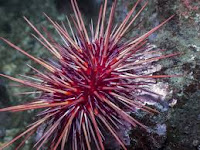
Living with Folk Wisdom - 50 Useful Trivia and Practical Tips (Test, 50 items True or False)
Dr Abe V. Rotor
Living with Nature - School on Blog
Lesson: How rich is your knowledge handed down by old folks? How relevant is traditional knowledge today? These items may be looked upon as science or superstition, so that separating the grain from the chaff is important. Reprint of previous post by popular request. (edited)
 This lesson was given to school teachers undergoing special training program at UST Graduate School sponsored by DECS and DOST.
This lesson was given to school teachers undergoing special training program at UST Graduate School sponsored by DECS and DOST.1. A child around 5 years old is ready for school if he passes the “touch your opposite your ear” test.
2. Añil or azul makes white clothes whiter. Añil is made from Indigo plant which is also used by farmers as green manure.
3. Of all the banana varieties the leaves of latundan and lakatan are the best for food wrapper.
4. For school children the circumference of the neck is twice the waistline – ideally.
5. Diamond is real if it scratches glass.
6. Leaves of Madre de Cacao or kakawate is used to hasten the ripening of fruits.
7. Salt is applied on the butt end (peduncle) of mango, chico, atis and the like, to hasten ripening. .
8. More fish are caught in the sea during full moon.
9. Mungo seeds that remain hard after cooking are seeds which were immature when harvested.
10. Oranges with indented bottom are sweeter; elongated lansones is sweeter than rounded ones.
11. Don't stir rice while cooking, otherwise it results in uneven cooking.
12. During thunder and lightning nitrogen gas is combined with Oxygen to form nitrate (NO3) which is vital to plant growth and development.
13. When planting on sloping land be sure that the rows follow the contour of the field to minimize erosion and siltation.
14. Burying fruits in ash, sand or sawdust delays ripening.
15. Corn harvest increases by decapitating the standing crop (detasseling).
16. You can count with the finger the macapuno trees in a coconut grove, and if you find one, not all the nuts of that tree are macapuno.
17. Farm animals grow faster with melodious music, like Mozart's composition, so with certain plants.
18. Bad gums can lead to hearty attack.
19. A candidate of heart attack is known by his features, like being bald, having a big tummy.
20. An unconscious person is revived by pressing his base of his foot thumb.
21. This is a test for fresh egg. When immersed in water it lies at the bottom on its side.
22. Pruning enhances survival of seedlings and cuttings, pruning stimulate flowering and fruiting.
23. It is true that raining while the sun is out breeds insects.
24. Jackfruit or nangka may bear fruits under the ground.
25. Light trapping of insects, such as gamu-gamo (winged termite), is effective and practical.
26. Old folks on the farm are more familiar with wild food plants than today’s agriculturists.
27. Old folks use garlic and red pepper (siling labuyo) to control common insect pests.
28. Pinag-aasawa ang kalabasa (pollination) to insure fruit formation.
29. Carabao’s milk is more nutritious than cow’s milk.
30. Chopped banana stalk makes a cold pack substitute.
31. Corn silk tea is good for the kidney.
32. The elbow, rather than the finger, is ideal to test a tepid bath for the baby.
33. Ethnic music in the rural area is part of a wholesome life, it is also therapeutic.
34. Fly maggots heal deep wounds, a medical practice, before the advent of antibiotics.
35. Contrary to common belief, guava seeds don't cause appendicitis.
36. Gulat ang gamut sa sinok. Jolting the patient stops his hiccup.
37. In the absence of vinegar or any medication, urine is immediately applied on wound caused by sea urchin.
38. Ipil-ipil seed is used by old folk to expel ascaris worms (bulate sa tiyan), just by pounding around 5 mature seeds and mixing it with syrup.
39. Ipon or dulong is the a favorite delicacy of Ilocanos, quite often eating it raw.
40. It’s strange but true, “When dust gets into your eyes, blow your nose.”
41. Kamote or sweet potato builds as much gas (flatulence).
42. Lead (Pb) poisoning can be obtained unknowingly from paints, prints, dyes, because lead is an excellent fixer.
43. Lead poisoning was common among the Romans when they changed their drinking bronze vessels into lead alloys.
44. A mother should read, sing and talk to her baby in the in the womb from the time of conception. Pregnant mothers should also have a happy and positive disposition.
45. Mothers should not do heavy work for 40 days after childbirth.
46. Pansit-pansitan or Piperonia pellucida relieves arthritis.
47. To catching a live monkey, bore a whole on a green coconut (buko) just enough for its hand to enter. It will gather the soft flesh and make a firm grip, thus trapping its hand. Then it is time to subdue the bewildered animal.
48. The female seahorse turns over her eggs to her partner after mating and frees herself from "babysitting".
49. Dogs eat grass for self-medication, so with parrots eating clay.
50. A brown grasshopper in summer turns green in the rainy season. ~
ALL ITEMS ARE TRUE.
45-50 OUTSTANDING
40-44 Very Good
31- 39 Good
21- 30 Average
20 and Below Visit this Blog more often
REFERENCE: Living with Folk Wisdom, 2008, by AVRotor (UST Publising House, Manila). Acknowledgement: Internet photos.






No comments:
Post a Comment